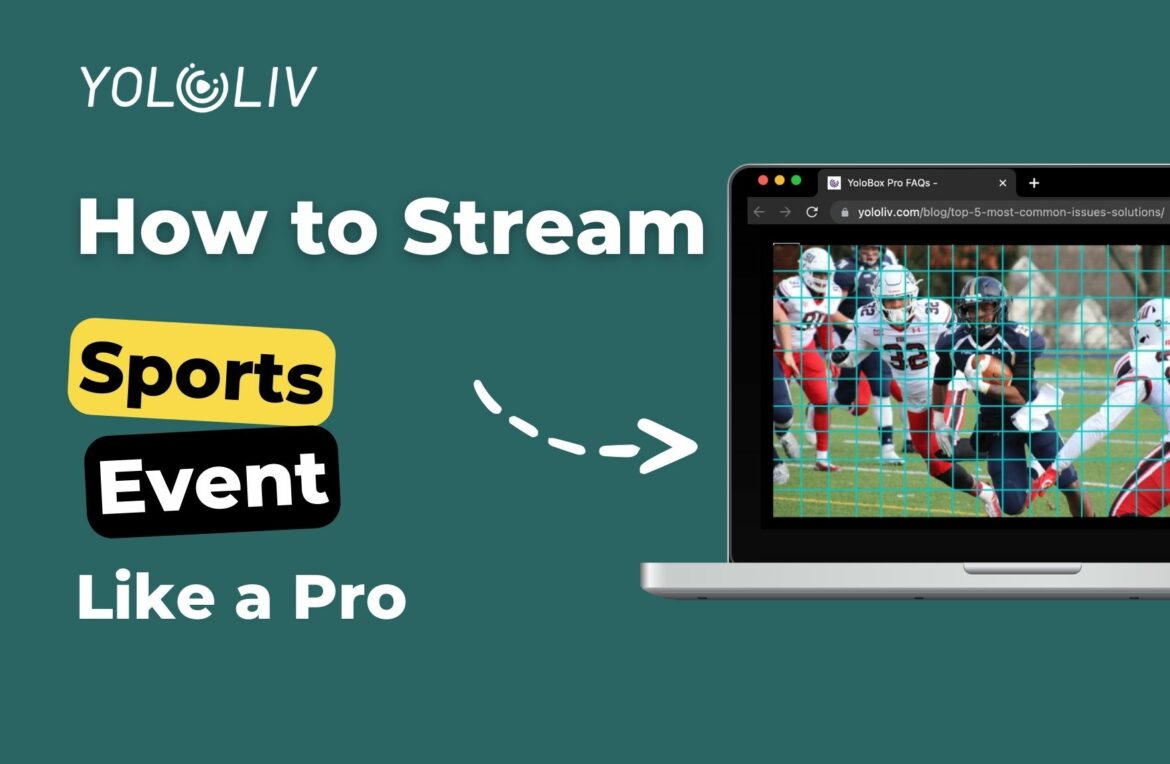Live streaming and broadcasting sports can be a daunting task, especially when faced with time constraints, complex setups, unreliable internet connections, or subpar equipment. However, with the right approach and tools, you can overcome these challenges and deliver outstanding sports live streams. Let’s explore the steps you can take to become a pro at live-streaming sports.
Step 1: Streamline Your Setup for Efficiency
A plug-and-play setup is a game-changer when it comes to simplicity and functionality. By using plug-and-play encoders, you can connect your camera and audio sources directly to the internet, eliminating the need for complicated configurations. Consider using devices like the YoloBox Pro, which are user-friendly and require minimal setup. With a plug-and-play setup, you can focus more on the event itself and create exceptional live broadcasts in less time.
Step 2: Preparing for Game Day
Test and Ensure a Strong Internet Connection
Before going live, test your internet connection to ensure its reliability. A strong and stable internet connection is crucial for seamless streaming. Conduct tests the day before and on the day of the event to identify any potential issues. Addressing these problems beforehand will help you avoid interruptions during the live stream.
Optimize Audio Quality
Audio is an essential component of a successful live stream. Ensure that your audio levels are properly balanced and free from any distortions or background noise. Perform audio tests and troubleshoot any issues in advance. Additionally, secure your cabling to prevent accidents and organize your video cables for better cable management.
Run Test Streams
Before going live, it’s essential to run test streams to ensure that all equipment is functioning properly. Test your video and audio sources, check camera angles, and verify that all connections are working as expected. Running multiple tests will help you identify and resolve any potential issues before the actual event.
Step 3: Ensuring a Reliable Streaming Protocol
In many athletic environments, reliable internet access may be a challenge. If you find yourself in a venue without a stable internet connection, consider using a mobile hotspot as an alternative. While it may not be ideal, a mobile hotspot can help you stream from remote locations where Wi-Fi is unavailable. Choose a live streaming platform with a robust streaming protocol that can handle various network conditions and deliver professional-quality streams, even with less-than-ideal connections.
3 Ways to Improve Your Production Quality
1. Engage Your Audience with Live Scores
Enhance the viewing experience for your audience by displaying live scores during the stream. By overlaying the scoreboard on your broadcast, you keep your viewers informed about the game’s progress in real-time. Utilize a score bug, which acts as a bridge between your scoreboard controller and plug-and-play encoder, to seamlessly integrate live scores into your stream. This feature adds an extra layer of engagement and makes your broadcasts more dynamic.
2. Invest in Quality Gear
Investing in high-quality equipment can significantly improve your production quality. Consider adding color commentary to your live stream by using appropriate audio equipment. To capture smooth shots and maintain mobility, invest in a fluid tripod. Additionally, a zoom controller can enable seamless zooming in and out, providing your viewers with a more immersive experience.
3. Enhance Your Broadcasting Skills
- Leverage Educational Resources
To refine your broadcasting skills, take advantage of the wealth of resources available online. Enroll in educational courses tailored to live streaming, where industry experts share valuable insights. Explore informative articles that offer tips, best practices, and technical guidance for sports live streaming. YouTube channels, such as the YoloLiv YouTube channel, provide video tutorials that simplify complex concepts in a digestible format.
- Gain Hands-On Experience
The best way to become a better broadcaster is through practice. Continuously use your streaming equipment to gain hands-on experience. Apply the knowledge you acquire from courses, blogs, and videos to real-world scenarios. By consistently refining your skills, you’ll be well-prepared to deliver exceptional live streams.
Conclusion
Live streaming sports requires careful preparation, the right tools, and a commitment to excellence. By streamlining your setup, optimizing your workflow, ensuring a reliable streaming protocol, improving production quality, and enhancing your broadcasting skills, you can elevate the live streaming experience for your audience. Embrace these steps, and you’ll be well on your way to mastering the art of live streaming sports.
9,196 total views, 44 views today

Pauline is a Marketing Specialist at YoloLiv, with over three years of experience in overseas digital marketing. She aims to produce high-quality and practical content for all tech lovers and dig deeper into the live streaming fields.


